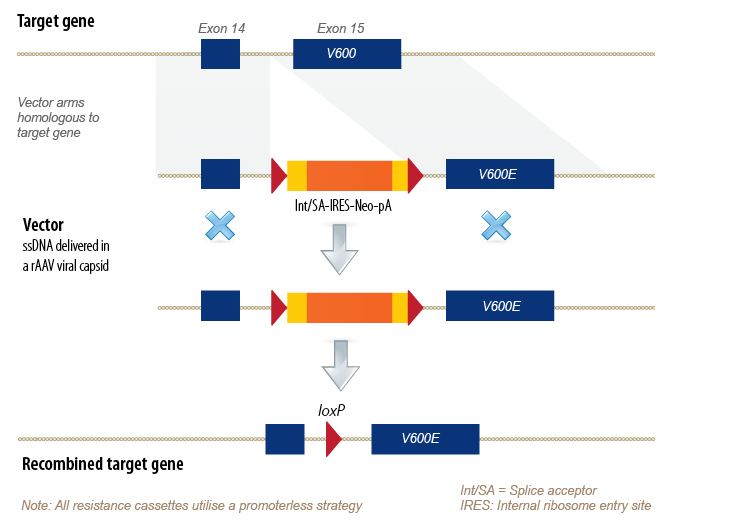 | ||
Recombinant adeno-associated virus (rAAV) based genome engineering is a genome editing platform centered on the use of rAAV vectors that enables insertion, deletion or substitiution of DNA sequences into the genomes of live mammalian cells. The technique builds on Capecchi and Smithies’ Nobel Prize–winning discovery that homologous recombination (HR), a natural hi-fidelity DNA repair mechanism, can be harnessed to perform precise genome alterations in mice. rAAV mediated genome-editing improves the efficiency of this technique to permit genome engineering in any pre-established and differentiated human cell line, which, in contrast to mouse ES cells, have low rates of HR.
Contents
The technique has been widely adopted for use in engineering human cell lines to generate isogenic human disease models. It has also been used to optimize bioproducer cell lines for the biomanufacturing of protein vaccines and therapeutics. In addition, due to the non-pathogenic nature of rAAV, it has emerged as a desirable vector for performing gene therapy in live patients.
rAAV Vector
The rAAV genome is built of single-stranded deoxyribonucleic acid (ssDNA), either positive- or negative-sensed, which is about 4.7 kilobase long. These single-stranded DNA viral vectors have high transduction rates and have a unique property of stimulating endogenous HR without causing double strand DNA breaks in the genome, which is typical of other homing endonuclease mediated genome editing methods.
Capabilities
Users can design a rAAV vector to any target genomic locus and perform both gross and subtle endogenous gene alterations in mammalian somatic cell-types. These include gene knock-outs for functional genomics, or the ‘knock-in’ of protein tag insertions to track translocation events at physiological levels in live cells. Most importantly, rAAV targets a single allele at a time and does not result in any off-target genomic alterations. Because of this, it is able to routinely and accurately model genetic diseases caused by subtle SNPs or point mutations that are increasingly the targets of novel drug discovery programs.
Applications
To date, the use of rAAV mediated genome engineering has been published in over 1300 peer reviewed scientific journals. Another emerging application of rAAV based genome editing is for gene therapy in patients, due to the accuracy and lack of off-target recombination events afforded by the approach. There are a number of clinical trials currently in progress.
